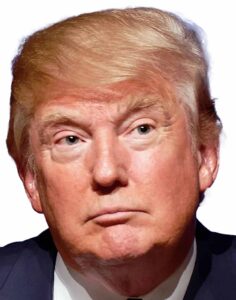
The 1980 Agreement on Trade in Civil Aircraft is in danger of unravelling under tariffs imposed under the Trump administration, with 10pc baseline tariffs on foreign goods and country-specific reciprocal tariffs targeting Canada, Mexico, and China.
Potential increases in costs from these tariffs could disrupt the integrated aviation supply chain established under the 1980 deal, impacting U.S. manufacturers like Boeing reliant on Canadian and Mexican components.
Legal and diplomatic tensions may arise from tariff impositions on signatories, risking challenges at the WTO as countries like Canada and the EU respond to perceived breaches of trade agreements.
The Agreement on Trade in Civil Aircraft, effective January 1, 1980, aimed to eliminate tariffs on a range of aviation products among major signatories like the United States, EU, Canada, Japan, and China.
This agreement dismantled import duties as high as 10-20pc on civil aircraft and components, making products more competitive and lowering costs for manufacturers and consumers alike.
The 1980 Agreement on Trade in Civil Aircraft came into force on January 1, 1980, under the auspices of the General Agreement on Tariffs and Trade (GATT), later incorporated into the World Trade Organization (WTO). This plurilateral agreement, signed by major aviation players including the United States, the European Union, Canada, Japan, and others (with China acceding in 2001), aimed to foster a free-market environment for civil aviation by eliminating tariffs on a wide range of aviation products. These include civil aircraft (e.g., commercial planes and large business jets), aircraft engines, flight simulators, and related parts and components. The agreement also provisionally extended duty-free treatment to ground maintenance simulators and included commitments to base government purchasing decisions on commercial and technical merits rather than political influence, reducing trade distortions like subsidies or preferential procurement.
The deal’s core achievement was to dismantle import duties—often as high as 10-20pc before 1980—on these goods among signatories, making aviation products cheaper and more competitive globally. For example, it ensured that a Boeing jet exported to Europe or an Airbus plane imported into the U.S. faced no tariffs, benefiting manufacturers, airlines, and consumers through lower costs. It remains one of only two WTO plurilateral agreements (alongside the Government Procurement Agreement) binding only its signatories, not all WTO members, covering over 90pc of the global civil aircraft trade.
Potential Impact of U.S. Tariffs in 2025
As of April 8, 2025, U.S. tariffs introduced under the Trump administration threaten to disrupt this framework. The administration has implemented a 10pc baseline tariff on all foreign-origin goods effective April 5, 2025, with additional country-specific “reciprocal” tariffs starting April 9, 2025, targeting nations perceived to impose unfair trade barriers on U.S. goods. Canada and Mexico, key signatories to the 1980 agreement, faced 25pc tariffs on non-USMCA-compliant goods from March 4, 2025, though exemptions for USMCA-qualifying items (including many aircraft parts) persist until at least April 2, 2025. China, another signatory, saw tariffs rise from 10pc to 20pc in March 2025, layered atop existing Section 301 tariffs, with further increases possible.
These tariffs could undermine the 1980 agreement in several ways starting with direct Cost Increases: While the agreement mandates zero tariffs on covered aviation goods among signatories, U.S. tariffs on Canada, Mexico, and China—major suppliers of aircraft components—could hit non-covered or non-compliant items. For instance, Canada produces landing gear and engine subassemblies, while Mexico supplies wiring harnesses and fuselage parts. A 25pc tariff on these, if they fall outside USMCA rules of origin, raises costs for U.S. manufacturers like Boeing, who rely on a North American supply chain optimized under decades of duty-free trade. China’s role in electronics and composite materials could see similar disruptions.
Secondly supply chains could be disrupted. 1980 deal fostered a globally integrated aviation supply chain. Tariffs on steel (25pc worldwide since March 12, 2025) and aluminum—key aircraft materials—don’t directly violate the agreement but inflate manufacturing costs universally. If Canada or Mexico retaliates with counter-tariffs on U.S. exports (e.g., Canada’s 25pc on $20.7bn of U.S. goods), U.S. component suppliers could lose competitiveness, indirectly straining the duty-free ecosystem.
Thirdly they will raise legal and diplomatic tension: The U.S. imposing tariffs on signatories risks breaching the spirit, if not the letter, of the 1980 agreement. While the baseline 10pc tariff exempts 1,000 product categories (including some aviation items like semiconductors), the reciprocal tariffs—e.g., 12pc on Canada and Mexico if exemptions lapse—could prompt legal challenges at the WTO. Canada and the EU have historically used WTO disputes to counter U.S. trade actions (e.g., the Boeing-Airbus subsidy battles), and this could escalate if tariffs persist.
Fourthly they will lead to an erosion of multilateralism.



